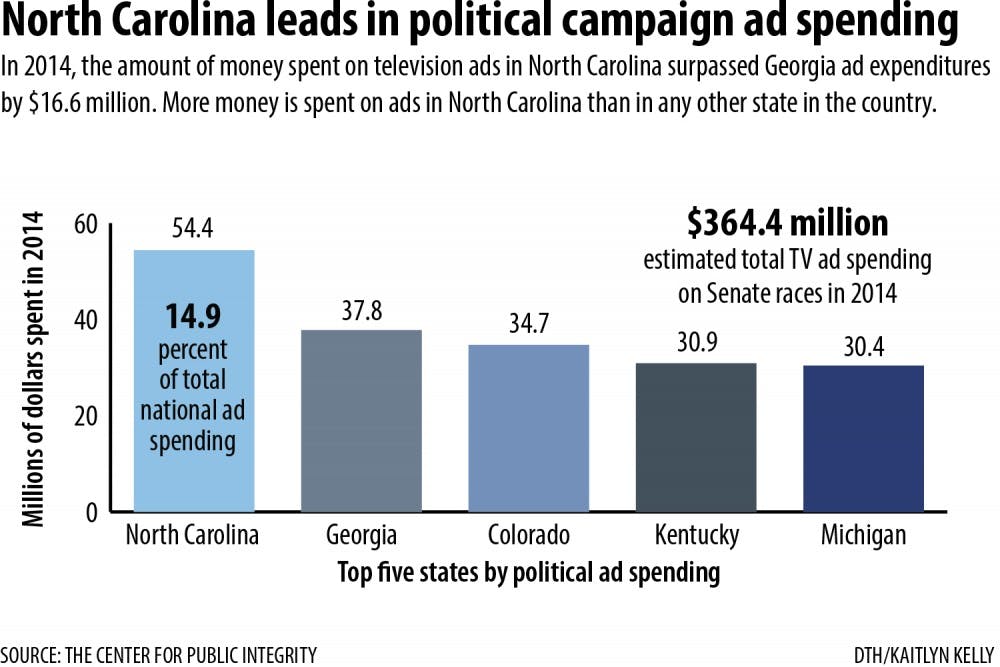More than 10,800 U.S. Senate election-focused ads that aired between Oct. 14 and 20 featured some content that attacked either incumbent Democrat Sen. Kay Hagan or Republican challenger Thom Tillis, according to a Center of Public Integrity analysis of preliminary data from Kantar Media/CMAG, an ad tracking firm.
Ferrel Guillory, a UNC journalism professor and director of the Program on Public Life, said the results aren’t surprising because the state has grown accustomed to negative TV commercials since the 1984 U.S. Senate election between Jim Hunt and Jesse Helms. At the time, it was the most expensive race in the country.
The commercials now are more intense, he said, but are generally in keeping with North Carolina’s trends in political advertising.
Tillis on Monday released a campaign ad calling attention to the degree of negative advertising.
“If you believed all you see on TV, you’d conclude that Sen. Hagan is a bad person, and that I am too,” he said in the 30-second spot. “It’s a shame.”
Dave Levinthal, senior reporter at the Center for Public Integrity, said the number of negative ads appears to be a record for a U.S. Senate race.
Levinthal said this is happening because the race is so close and both candidates are not widely popular.




